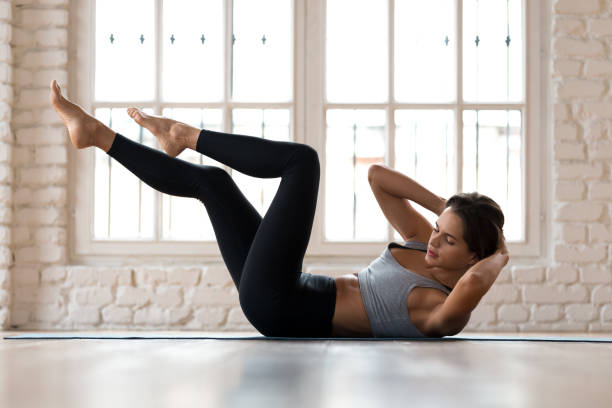Breathing techniques and low impact workouts for stress resilience
Learn how intentional breathing and low-impact movement can strengthen stress resilience, support recovery, and enhance daily wellbeing. This article outlines practical breathing practices, gentle workouts, and lifestyle considerations—nutrition, hydration, sleep, and skincare—that help maintain balance over time.

Breathing is an accessible tool for stress management: simple patterns can shift the nervous system from fight-or-flight toward calm physiology, while low-impact workouts build physical resilience without excessive strain. By combining deliberate breathwork with gentle movement and sound lifestyle choices, you can support recovery, posture, and endurance while protecting skin health and overall wellbeing. The guidance below focuses on practical techniques and balanced routines you can adapt to daily life.
Workouts and stress resilience
Low-impact workouts—walking, swimming, cycling, Pilates, and restorative yoga—offer cardiovascular and muscular benefits while minimizing joint stress. These activities raise heart rate moderately, improving endurance and circulation without provoking high cortisol spikes that intense exercise can sometimes cause. Pairing short breath-focused intervals (for example, five minutes of diaphragmatic breathing before and after a 20–30 minute session) can enhance parasympathetic recovery and make workouts feel more restorative. Aim for consistency over intensity: three to five low-impact sessions per week supports mood regulation, metabolic health, and sustainable strength gains.
Mobility and posture benefits
Mobility work and posture-focused exercises reduce mechanical stress and help breathing mechanics function optimally. Gentle mobility drills for the thoracic spine, hips, and shoulders help expand rib cage movement and ease breath flow, which supports both relaxation and activity. Incorporate daily mobility sets—cat-cow, thoracic rotations, and hip-openers—for 10–15 minutes to improve posture and reduce muscle tension. Better alignment promotes diaphragmatic breathing, which in turn supports stress resilience and reduces strain on the neck and jaw muscles that often hold stress-related tension.
Strength and endurance gains
Low-impact strength training with bodyweight exercises, resistance bands, or light weights builds muscle endurance and functional strength without high-impact loading. Focus on compound movements like squats to a chair, leaning push-ups, and banded rows to support posture and daily activities. Combine sets with paced breathing: inhale during the easier phase and exhale during exertion to stabilize the core and reduce Valsalva-style breath-holding. Improving muscular endurance helps the body cope with prolonged stressors and reduces fatigue during day-to-day tasks.
Flexibility, recovery, and sleep
Flexible tissues and intentional recovery practices reduce injury risk and support restorative sleep—both critical for stress resilience. Gentle stretching after workouts and at bedtime can signal relaxation to the nervous system; include hamstring and hip stretches plus a short progressive relaxation or 10 minutes of slow breathing. Prioritize sleep hygiene—consistent schedule, cool dark environment, and minimizing screens before bed—to amplify recovery. Better sleep enhances hormonal balance, supports repair, and improves emotional regulation.
Nutrition, hydration, and supplementation
Balanced nutrition and adequate hydration underpin energy levels, cognitive function, and recovery. Emphasize whole-food sources of protein, healthy fats, fiber-rich carbohydrates, and micronutrients that support neurotransmitter synthesis and muscle repair. Consistent hydration aids circulation and thermoregulation, both important during exercise and stress response. Supplementation can be considered when dietary gaps exist—common supports include vitamin D, omega-3s, and magnesium—but decisions should be based on evidence and, when possible, professional advice. Thoughtful fueling before and after low-impact workouts supports endurance and recovery.
Skincare and overall wellbeing
Stress and exercise influence skin health through inflammation, hydration status, and sleep patterns. Gentle cleansing, sun protection, and adequate topical or nutritional hydration help preserve skin barrier function. Practices that reduce stress—breathwork, gentle movement, and improved sleep—can indirectly support clearer, more resilient skin. Avoid harsh products that disrupt the skin barrier after workouts; instead, focus on mild cleansers and replenishing moisturizers. Consider how systemic recovery strategies—hydration, balanced nutrition, and rest—contribute to healthy skin over time.
This article is for informational purposes only and should not be considered medical advice. Please consult a qualified healthcare professional for personalized guidance and treatment.
In summary, pairing breathing techniques with low-impact workouts creates a practical framework for stress resilience. Breathwork regulates nervous system responses, while gentle movement improves strength, mobility, posture, and recovery. Supporting habits—adequate sleep, balanced nutrition, hydration, and sensible supplementation when indicated—amplify those benefits and contribute to better endurance and skin health. Consistency and gradual progression matter more than intensity: small, sustainable changes add up to meaningful improvements in wellbeing.





